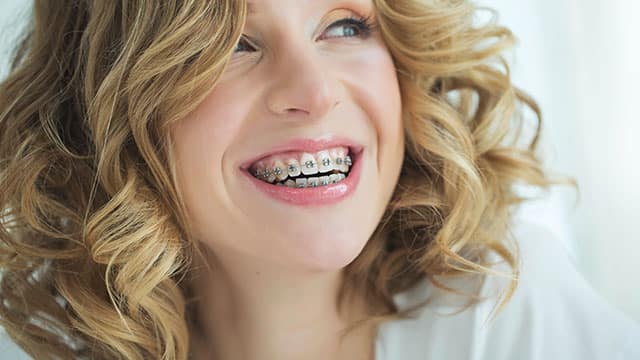What Are Retainers?
Retainers are used to hold your teeth in place after braces have shifted them into alignment. The types of retainers include:
- Hawley retainers
The Hawley retainer is the traditional type of retainer made of a plastic-like mold that fits the roof of your mouth and has a length of wire that runs along the outside of your teeth.
- Clear retainers
Clear retainers are an inconspicuous alternative to the Hawley retainer because they're made of clear plastic and are custom-made to fit over your teeth, holding them in place.
- Bonded retainers
A bonded retainer is a piece of wire that runs along the back of your teeth, and it is permanently bonded to your teeth with a composite material that's cured (or hardened) with a curing light.
How Does Tooth Realignment Work?
Your bones have two kinds of cells that do all the work to remodel your skeleton as needed. Osteoclasts break down old bone and deliver it into your bloodstream (resorption), and osteoblasts build your bone where it needs to be reinforced (ossification). When you're a child, you create bone faster, and the process slows as you age. In fact, according to Duke Orthopedics, when you were in your first year of life, almost 100% of your skeleton was replaced, and as an adult, your bones remodel themselves at a rate of about 10% per year.
When orthodontists realign your teeth with braces, clear aligners, or other devices, resorption and ossification are what allows for the movement and strengthening of your teeth in a new position.
Why Are Retainers Needed?
Let's briefly discuss how your jawbone allows your teeth to shift into new positioning in the first place. Your bones have two kinds of cells that do all the work to remodel your skeleton as needed. Osteoclasts break down old bone and deliver it into your bloodstream (resorption), and osteoblasts build your bone where it needs to be reinforced (ossification). Bones are reinforced through osseointegration, where they are used the most.
For your jawbone, when you chew and bite, the force you exert through your teeth into your jaws sends signals to osteoblasts to keep that bone strong. After your teeth have been aligned with orthodontics, this process helps your teeth settle into place while a retainer holds them there.
Without a retainer, your teeth will relapse toward their original position before the bone has time to strengthen in the necessary areas to keep them in place.
Learn if retainers can realign your teeth.
How Long Are Retainers Needed?
After your braces come off, it can take time for your teeth to stay in place. Follow your orthodontist's recommendations for your specific needs. You may need to wear your retainer 24 hours a day for the first three months, except when you're eating.
If your teeth were severely misaligned previously, it could take up to a year or more for things to truly stabilize. Your orthodontist may recommend you continue to wear a retainer at least part of every day after this first 12-month period to maintain a new, straightened position. According to the American Association of Orthodontics, many people wear retainers every night for life. They say that retainers cannot be worn for too long or too much.
At a minimum, follow the prescription of your orthodontist. If you don't wear your retainer for a period of time and your teeth have shifted in a way that makes your retainer uncomfortable or painful to wear, contact your orthodontist right away so you can have it refitted.
Learn more about how long you have to wear a retainer.
Why Is Tooth Alignment Important?
When your teeth are aligned, they tend to harbor fewer bacteria because they're easier for you to clean. Better oral hygiene will decrease your risk of tooth decay, periodontal disease, and your gums may support your teeth better when they aren't overlapping, too. You could also have a decreased risk of chipping, breaking, or wearing away your teeth when they fit together correctly. Clear aligners and braces could even relieve abnormal stress put on your jaw from misaligned teeth.
If you've used braces, clear aligners, or another orthodontic appliance to straighten your teeth, you've worked hard for a proper bite. The best way to ensure all that work was worth it is to follow your orthodontist's advice and wear your retainer as prescribed. When you do that, you'll be able to retain a healthy smile for life.
This article is intended to promote understanding of and knowledge about general oral health topics. It is not intended to be a substitute for professional advice, diagnosis or treatment. Always seek the advice of your dentist or other qualified healthcare provider with any questions you may have regarding a medical condition or treatment.
ORAL HEALTH QUIZ
What's behind your smile?
Take our Oral Health assessment to get the most from your oral care routine
ORAL HEALTH QUIZ
What's behind your smile?
Take our Oral Health assessment to get the most from your oral care routine














